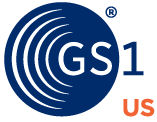The Last Link in the Chain
Decathlon is now focusing on GS1 Digital Link to engage with customers. GS1 Digital Link helps barcodes and other data carriers become web links—connecting a product’s unique identity to online sources of real-time information that brands control. This means that GS1 identifiers, such as the Global Trade Item Number® (GTIN™), become gateways to consumer information that strengthen brand loyalty, improve supply chain traceability information, fortify business partner APIs, and more.
Two-dimensional (2D) barcodes, including QR codes, can carry all GS1 keys and attributes. Because they can be applied to hold trade item information, such as the item expiry date, serial number, or batch/lot number, the 2D symbols can also be used to specify the URL in support of mobile phone scanning applications. These barcodes are especially useful with consumers because they carry a robust amount of product information and readily link to an internet repository where even greater amounts of product detail can be found.
“We also envision using RFID and GS1 Digital Link for recycling products. This will simplify the sorting of products and allow more efficient recycling processes,” D’Halluin says.
Sustainability is also served by improved efficiencies brought about by RFID: diminished overstocks and a reduction in excess shipments and unsold products. Accurate analysis of merchandise allows for right-sized manufacturing, reduced waste, and unwarranted transportation.
“In fact, with a circular economy,” D’Halluin says, “we foresee an eventual reduction of 20%-30% in raw materials needed to manufacture our products.”












